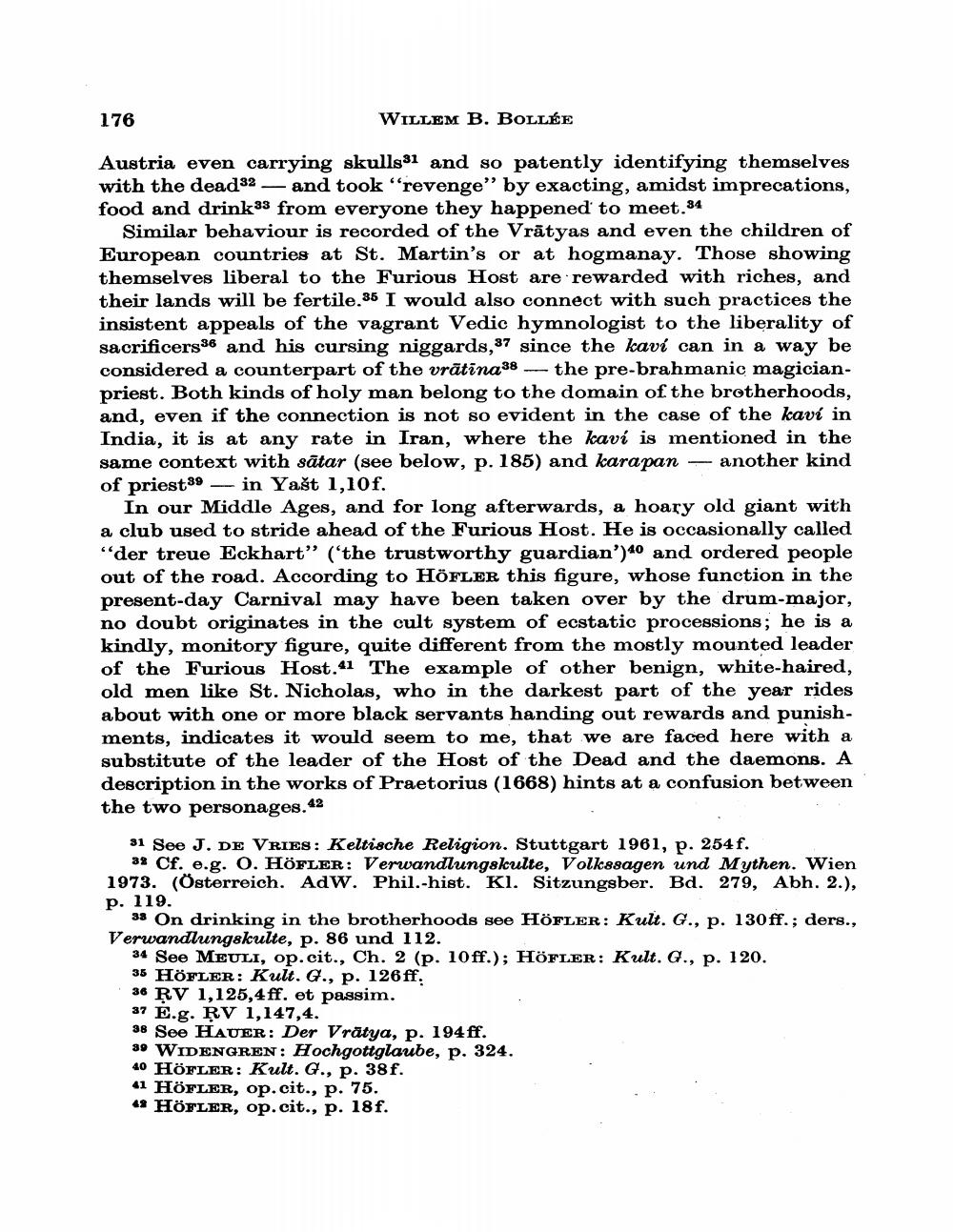________________
WILLEM B. BOLLÉE
Austria even carrying skulls and so patently identifying themselves with the dead and took "revenge" by exacting, amidst imprecations, food and drink 33 from everyone they happened to meet."
176
Similar behaviour is recorded of the Vratyas and even the children of European countries at St. Martin's or at hogmanay. Those showing themselves liberal to the Furious Host are rewarded with riches, and their lands will be fertile.35 I would also connect with such practices the insistent appeals of the vagrant Vedic hymnologist to the liberality of sacrificers and his cursing niggards,37 since the kavi can in a way be considered a counterpart of the vratinass the pre-brahmanic magicianpriest. Both kinds of holy man belong to the domain of the brotherhoods, and, even if the connection is not so evident in the case of the kaví in India, it is at any rate in Iran, where the kavi is mentioned in the same context with satar (see below, p. 185) and karapan another kind
of priest
in Yast 1,10f.
In our Middle Ages, and for long afterwards, a hoary old giant with a club used to stride ahead of the Furious Host. He is occasionally called "der treue Eckhart" ('the trustworthy guardian')40 and ordered people out of the road. According to HöFLER this figure, whose function in the present-day Carnival may have been taken over by the drum-major, no doubt originates in the cult system of ecstatic processions; he is a kindly, monitory figure, quite different from the mostly mounted leader of the Furious Host.41 The example of other benign, white-haired, old men like St. Nicholas, who in the darkest part of the year rides about with one or more black servants handing out rewards and punishments, indicates it would seem to me, that we are faced here with a substitute of the leader of the Host of the Dead and the daemons. A description in the works of Praetorius (1668) hints at a confusion between the two personages.42
31 See J. DE VRIES: Keltische Religion. Stuttgart 1961, p. 254f.
32 Cf. e.g. O. HÖFLER: Verwandlungskulte, Volkssagen und Mythen. Wien 1973. (Österreich. AdW. Phil.-hist. Kl. Sitzungsber. Bd. 279, Abh. 2.), p. 119.
33 On drinking in the brotherhoods see HÖFLER: Kult. G., p. 130 ff.; ders., Verwandlungskulte, p. 86 und 112.
34 See MEULI, op. cit., Ch. 2 (p. 10ff.); HÖFLER: Kult. G., p. 120.
35 HÖFLER: Kult. G., p. 126ff.
36 RV 1,125,4ff. et passim.
37 E.g. RV 1,147,4.
38 See HAUER: Der Vratya, p. 194ff.
39 WIDENGREN: Hochgottglaube, p. 324.
40 HÖFLER: Kult. G., p. 38f.
41 HÖFLER, op. cit., p. 75.
42 HÖFLER, op. cit., p. 18f.




